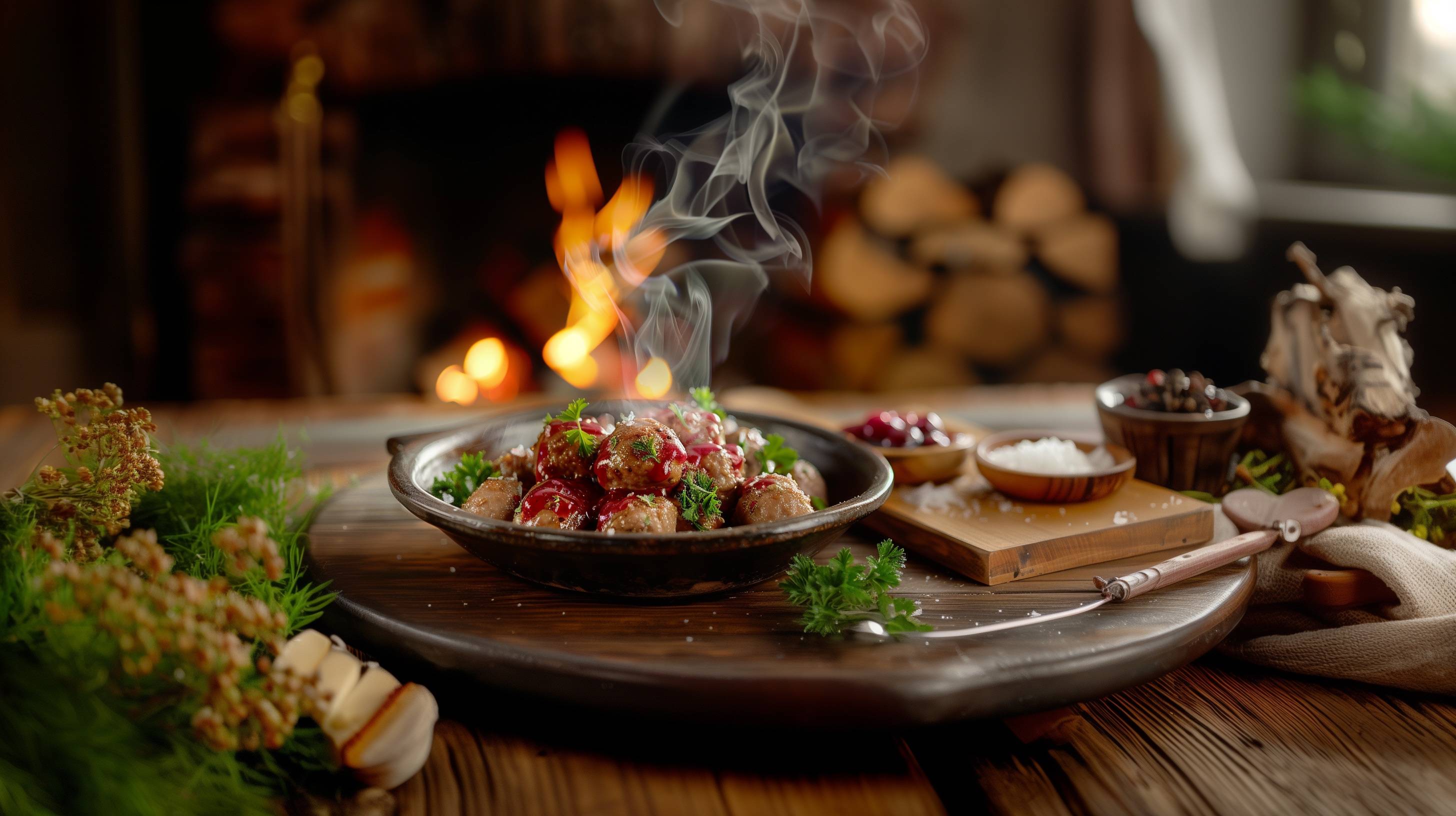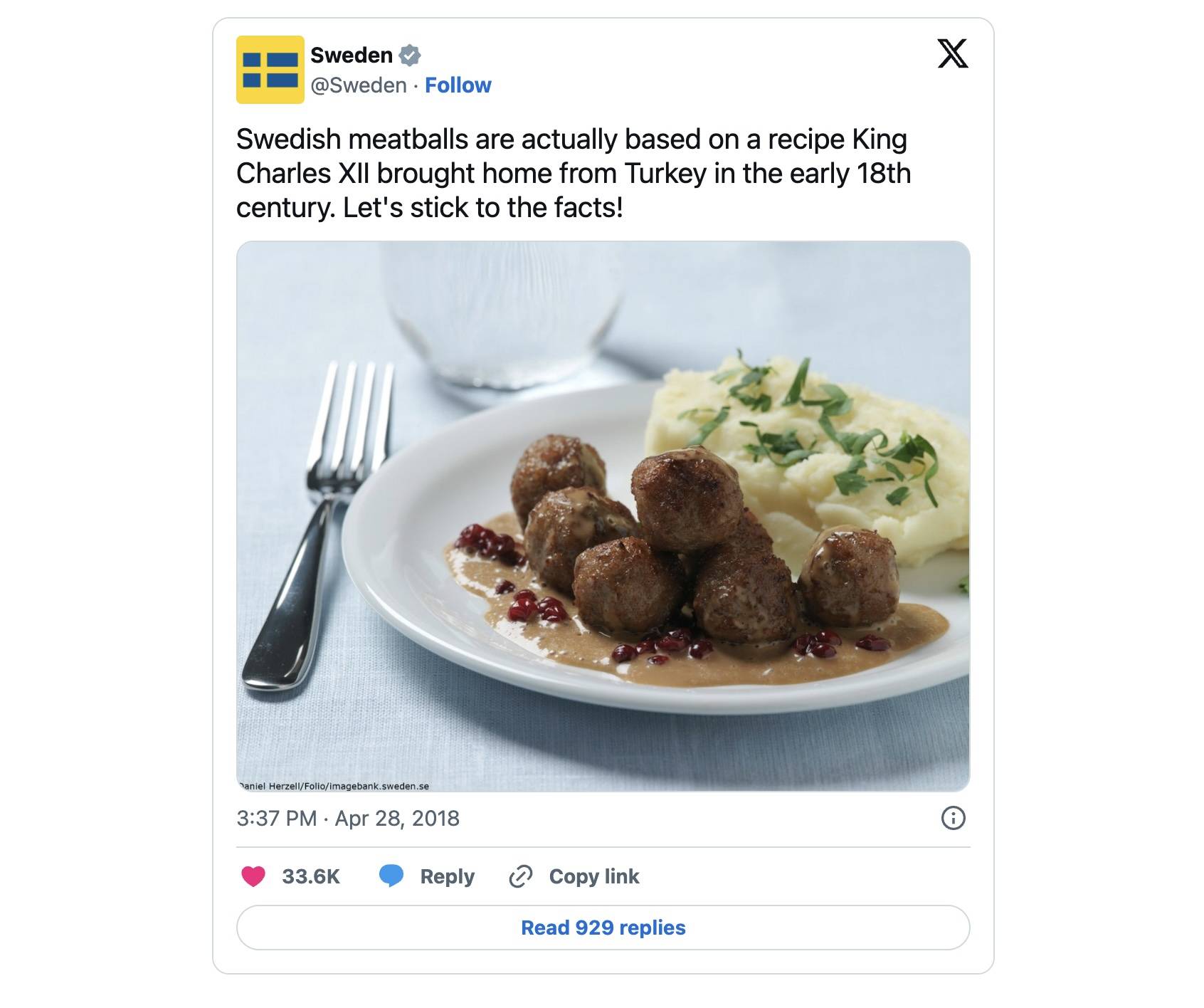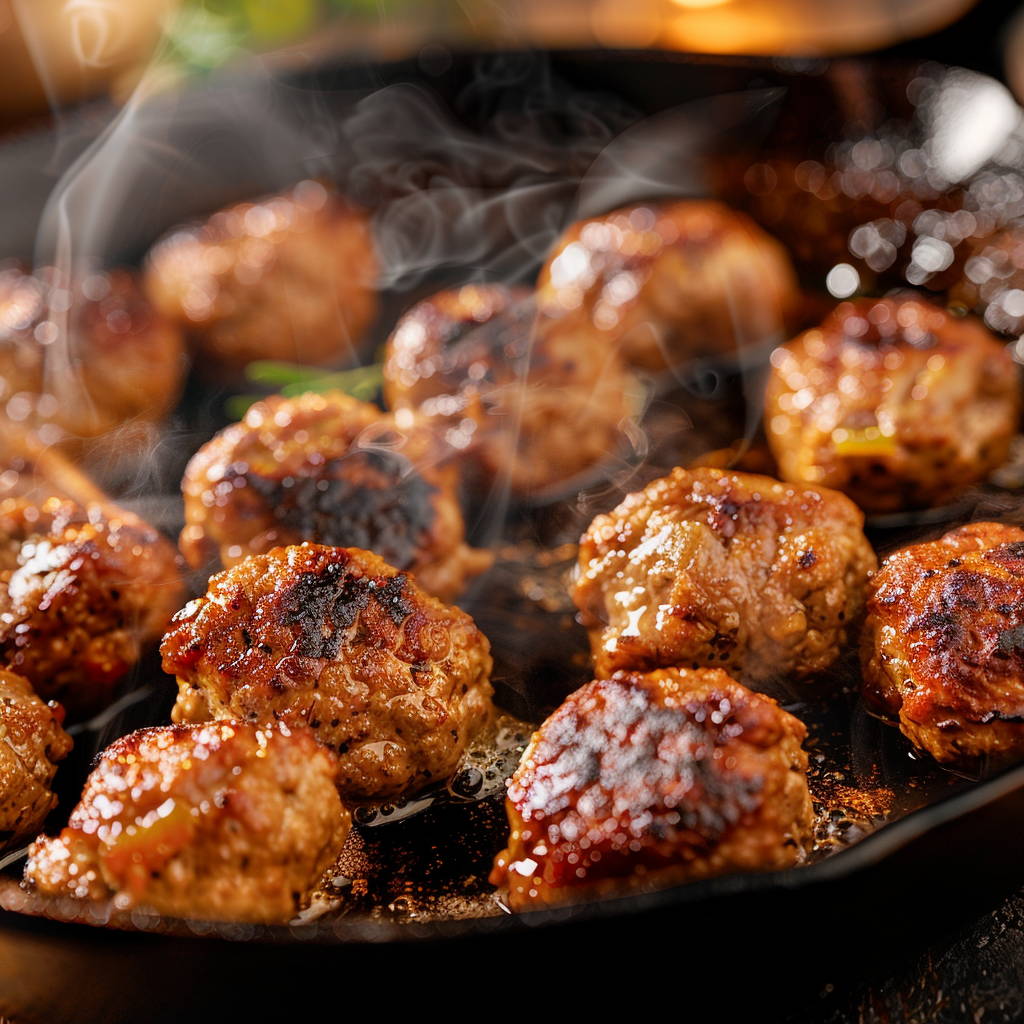We are on Trustpilot
We are rated Excellent, read what our customers are saying
Meatballs and Swedish cuisine go together like coffee and cream, but where did the dish originate? What’s the best recipe for making Swedish meatballs? Are there different kinds of Swedish meatballs? And how do you best serve meatballs?
Even if you’ve made meatballs your entire life, you might just find a thing or two in this article that you didn’t know. It’s the ultimate guide to Swedish meatballs, after all. And we share plenty of different meatball recipes —including a Michelin star one!

The Humble Meatball

The History of Swedish Meatballs

Perhaps Very Swedish After All...
As the blogger Swedish Spoon points out, En liten handbok i kooke-konsten (a little guide to the art of cooking) by Åke Rålamb, published by Bengt Höök in 1695, and a householding book by Christina Valleria, probably published before 1708, both included recipes for meatballs, even if they were called fricadelles and ox meat-lumps respectively. (Danish meatballs are called fricadelles till this day but are, generally speaking, larger and flatter than the Swedish meatballs.)
Rålamb’s recipe calls for chopped veal and suet, spiced with mace, salt, and pepper and these meatballs were either put back into the sinewy layer surrounding the meat and fried, or rolled in grated bread and egg and boiled, then fried in butter.
The other recipe, by Valleria, calls for beef, suet, eggs, bread crumbs, meat soup (likely what we would call meat stock today), and leek, to be seasoned with parsley, salt, pepper, ginger, and nutmeg. These meatballs should be boiled in meat soup and then fried in butter. Valleria included a few other recipes for meatballs in her book—some which call for onions and wine. So it seems the war about the *best* recipe for meatballs began a very long time ago…
Note that this was before there were meat grinders, which is why the meat was chopped and kept together with suet. Chances are meatballs became more popular in 1895 when the first meat grinders hit the market.
The Meatball’s Rise to Fame
The Ikea Meatball Controversy
We don’t produce blue cheese because the green mold spreads very easily.”
Ikea released a recipe for meatballs during the COVID pandemic so people could make their own when they couldn’t get to Ikea. But for those who thought they finally got the recipe for Ikea’s meatballs, they were sorely disappointed. Have a look below to find what Ikea’s meatballs contain, as well as the recipe they released.
The Ingredients for Ikea’s Famous Meatballs
Beef, Pork, Water, Bread Crumbs (enriched Wheat Flour [wheat Flour, Niacin, Reduced Iron, Thiamine Mononitrate, Riboflavin, Folic Acid], Salt, Dried Yeast), Eggs, Salt, Dehydrated Onion, Egg Whites, Natural Flavoring, Allspice. Contains: Wheat, Egg.
This is your typical store bought meatball, not the kind you’d make at home! As you can tell from the recipe below.
What Meatballs Should Contain… and Not Contain
If you ask just about any Swede, they have their own favorite recipe for meatballs but below are some of the ingredients most traditional recipes call for:
Meat—beef, pork, or a combination of the two
Binding agents—eggs, breadcrumbs, and/or mashed up potatoes
Onions and/or garlic—onions are more common than garlic from a historical perspective, but garlic has gained popularity…there’s also the question whether to use a powder, or the real deal (onions need to be finely chopped or grated, or the pieces stick out of the meatballs and burn when the meatballs are fried)...but some people prefer their meatballs free from both onions and garlic!
Seasoning: salt and pepper form the basis, but many people add things like nutmeg, mustard and/or parsley
Now, if you engage with just about any Swede, chances are they’ll tell you why their recipe is superior to any other meatball recipe. If you’re clever you tell them you want to taste it and get yourself an invite to dinner…
When writing this article I was discussing this with co-workers and we started arguing about potatoes vs. bread crumbs…well, not so much argue, as baffle at the other person’s choice of ingredients…
You can also argue whether meatballs should be fried in oil or butter, but traditionally speaking, they were fried in butter (and sometimes boiled first, as seen in the recipes already mentioned).

The Modern Meatball
As people have become more selective about what meat they eat, the meatball has evolved. Today you can find meatballs made from both turkey and chicken in many stores. And as a Swedish expat, I have made meatballs from ostrich meat in countries where that is prominent.
With a plant based diet on the rise, you’ll also find plenty of recipes for vegan and vegetarian meatballs these days. Some recipes try to imitate the flavor or “real” meatballs and are usually made from some form of vegetarian protein. Others are simply balls made from vegetables, beans, or lentils. If they should be classified as “meatballs” can be debated…
As mentioned, with a renewed interest in local foods, the meatball has also been transformed into a gourmet experience and made from various game, including deer and moose.
Of course, people have also started experimenting with meatballs. These days you’ll find people trying all sorts of things, but the original Swedish meatball contains the ingredients mentioned above.
How to Serve Swedish Meatballs
Once you’ve decided on what meatball recipe to use (we’ve included several options below)…or not use…you have to decide how to serve the meatballs.
In Sweden, meatballs are traditionally served with boiled or mashed potatoes and accompanied by lingonberry jam or fresh lingonberries stirred with sugar (rårörda lingon) and/or a brown sauce made with milk or cream. Some people like to serve them with pickled cucumber, too.
If you’re in a hurry, or want to please the children, you might serve the meatballs with macaroni and ketchup instead.
Köttbullsmackan—the Meatball Sandwich
When to Serve Meatballs
Normally, meatballs are served for dinner with potatoes, mashed potatoes, or macaroni. If it’s a meatball sandwich, it’s likely to be served for lunch (unless it’s a smörgåsbord—i.e. Fancy sandwiches served at apathy or gathering).
Meatballs aren’t seasonal—they’re served throughout the year, though as it’s a hearty meal, you might be more prone to serve it during the cold months!
Meatballs are usually also served for Christmas dinner (on the 24th of December) and sometimes Easter and Midsummer, too.
For these holidays, you tend to start with serving herring and other types of fish and then progress to various meats, including meatballs. This is especially true for Christmas, but many serve meatballs for Easter and Midsummer, too, while others stick to just fish dishes. In our family, the meatballs are served together with prinskorvar (prince sausages—a type of cocktail sausage).
Five Things You Didn’t Know About Meatballs
In Closing—the Essence of Swedish Meatballs
Our Gourmet Cheese Collection